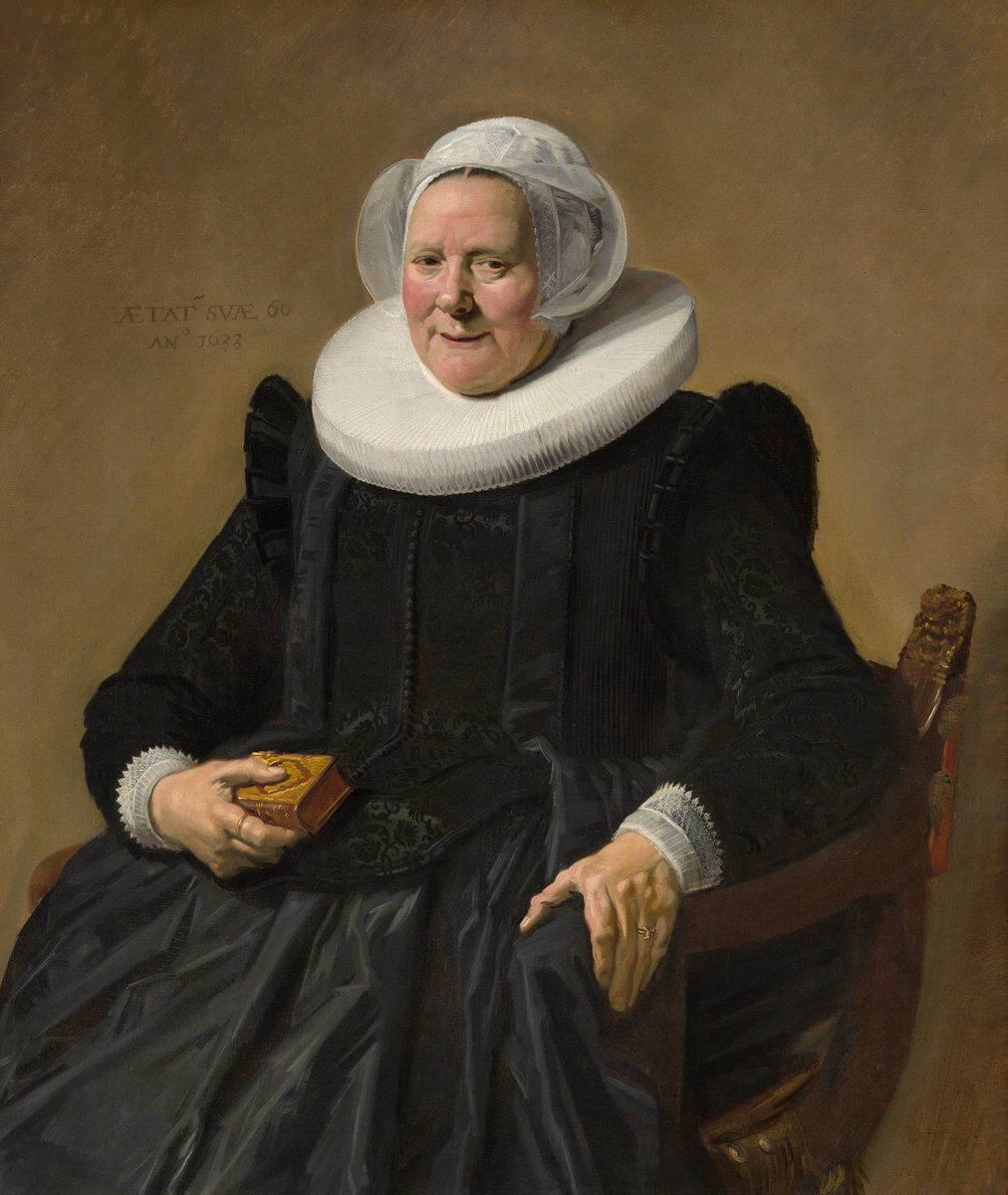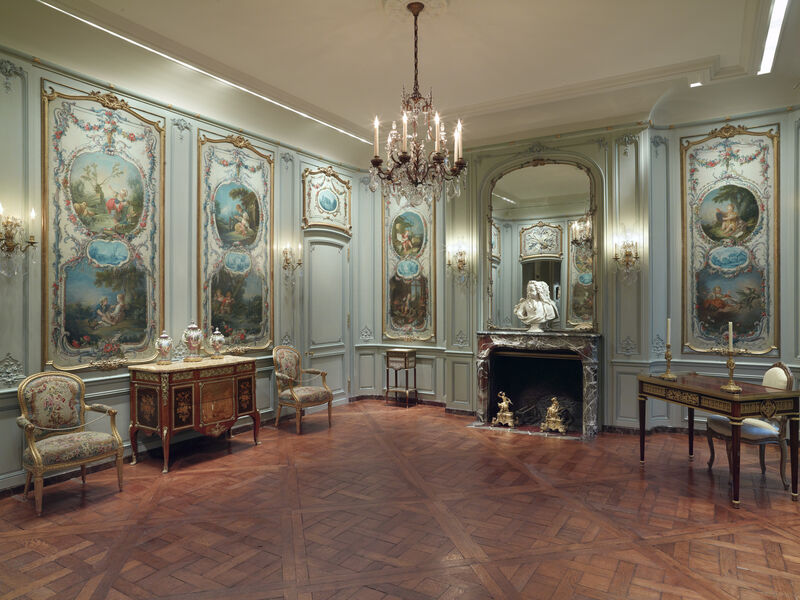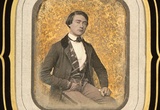Art Market
The Enduring Legacy of Joseph Duveen, America’s First Mega-Dealer

Portrait of Joseph Duveen, 1910. Photo by George C. Beresford/Beresford/Getty Images.

Thomas Gainsborough, The Blue Boy, Portrait of Jonathan Buttall, ca. 1770. Image via Wikimedia Commons.
Joseph Duveen, the man who would go on to completely change America’s relationship with art, was born above his parents’ antique shop in 1869. Duveen would eventually bring thousands of artworks over from Europe, which went on to form the foundations of countless American museums. And if you know what to look for, his eccentric business practices and firmly held beliefs about what constitutes important art inform the Western art canon and the art market to this day.
His father, Joseph Joel, was born Joel Joseph Duveen in the Netherlands and moved to the port town of Hull, England, in his early twenties. There, he began his business by traveling back to the Netherlands to source Dutch teacups, saucers, and Delftware, then returning to England, where he would re-sell them. Before long, he graduated from teaware and was returning from these trips with medieval tapestries, valuable furniture, a famous set of ginger jars, and all manner of housewares. Within three years of moving to Hull, he had married a woman named Rosetta (who was already one month pregnant with Joseph), and the two had set up and moved into the antique shop above which Joseph was born.

Rembrandt, Aristotle with a Bust of Homer, 1653. Image via Wikimedia Commons.
Joseph, whose life and exploits are extensively recounted in Meryle Secrest’s hefty 2005 biography Duveen: A Life in Art, was the oldest of 15 siblings. He dropped out of high school to help with his father’s antique business. Joseph’s uncle Henry, who also aided in the family’s blossoming business, was on assignment in New York when he wrote a letter back to the Duveens that read: “I like Amerika [sic] very well. It is a first class money making country, it is a fine rich country, it beats England in everything, you will be astonished what it is like, it is A one.” Joseph’s father wrote back telling Henry to find a shop to rent and the Duveens set up their first New York location; Uncle Henry remained stateside to sell the merchandise Joel and Joseph were acquiring. Then, in 1879, they traded up their shop in Hull for a storefront in London. Within a few years, after garnering illustrious customers, including the prince and princess of Wales, Joseph’s father (who had grown obsessed not only with fine objects, but also with their surroundings) had become the “most sought-after decorator” in London, according to Secrest.
After a bout with pneumonia, Joel Duveen began leaving England every autumn to escape the cold, not returning until the following Easter. This meant that by 1900, with his father gone six months out of the year and Uncle Henry living in New York, Joseph was free to run the family business as if it were his own, long before it actually was.
The makings of a mega-dealer

Raphael, Bindo Altoviti, 1515. Courtesy of the National Gallery of Art.

Raphael, The Niccolini-Cowper Madonna, 1508. Courtesy of the National Gallery of Art.
Much of Joseph Duveen’s success has been chalked up to one simple observation, which is his most famous quote: “Europe has a great deal of art, and America has a great deal of money.” While this was certainly true, Duveen also benefited from fortuitous timing, and had the sense, resources, and wherewithal to pounce. At the end of the 19th century, new technology made it easy to cheaply import agricultural goods, which led to a global abundance of grain and sent Europe spiraling into a depression. Suddenly, members of the British and Continental aristocracies were willing to part with the heirlooms, paintings, and sculptures that one would not have been able to get out of their manors a decade prior.
With the floodgates open and business growing, when the banker and prodigious art collector Rodolphe Kann died in 1905, leaving behind a collection that included works by Italian and Dutch
such as
,
,
; 10 paintings by
—including his Aristotle with a Bust of Homer (1653), which Duveen ended up re-buying and re-selling three times (it’s now at the Metropolitan Museum of Art)—and countless other artworks, fine objects, and furniture, Duveen was keen to purchase the whole suite. And after working out a payment plan, he did, for just over $4 million (or over $107 million today). He then sold a
and some minor works to American financier J.P. Morgan for $1 million; a Vermeer, four Rembrandts, and some sculptures for $500,000 to department store mogul Benjamin Altman; and a Rembrandt and some furniture for $2.5 million to Arabella Huntington, widow of the railroad magnate Collis P. Huntington. Just like that, Duveen had made his money back, and had enough minor inventory left from the sale to furnish his galleries for years. What’s more, he had bought Kann’s collection without bothering to tell his father, who still owned the business. This was Duveen’s biggest success yet, and it sparked a fire in him that would burn for the rest of his life.

Sir Peter Paul Rubens, Marchesa Brigida Spinola Doria, 1606. Courtesy of the National Gallery of Art.

Sir Anthony van Dyck, Queen Henrietta Maria with Sir Jeffrey Hudson, 1633. Courtesy of the National Gallery of Art.
Joseph’s father was knighted in the summer of 1908 and died that winter. In 1909, Uncle Henry wrangled a job as appraiser of U.S. Customs on imported works of art, and—surprise, surprise—the competition’s works began to be appraised at higher prices than Duveen’s, and were taxed accordingly. In 1912, Duveen hired the great Bernard Berenson, who was already Isabella Stewart Gardner’s personal advisor on all things
, to be his personal authenticator for all works from that era—at the time, an authentication from Berenson could significantly increase the value of a painting. That same year, with World War I on the horizon, Duveen officially moved from London to New York City and upgraded his stateside operation, opening a large location at 720 Fifth Avenue, on the corner of Fifth Avenue and West 56th Street. From that new base, he would quickly become the biggest art dealer the world had ever seen.
The tastemaker

Frans Hals, Portrait of an Elderly Lady, 1633. Courtesy of the National Gallery of Art.
The art market Duveen came to dominate was different from today’s in many ways. First, in the era in which Duveen’s American mega-millionaire clientèle—Frick, Altman, Morgan, Huntington, Gardner, and others—was buying art, there were very few illustrations, and virtually all the art being sold was coming from across the Atlantic. This meant that Duveen was not just the supplier to his clients, but also their personal advisor in all things art. They had to take his word regarding what artworks were good or bad, lest they sail to Europe to see for themselves.
Duveen was an opinionated art lover, especially regarding paintings, which gets at a critical aspect of his legacy: Since many of his clients’ collections went on to form the bedrock of major, influential museums across the country, and since these collections came overwhelmingly through Duveen, the man himself was in no small way a tastemaker for the United States. His aesthetic prejudices—in her biography, Secrest notes a distaste for dark paintings and a predilection for golden frames—are evident in the collections of major American institutions to this day.
Secondly, this was long before the modern dealer-artist relationship; artists and estates were not represented by singular gallerists, and so if you wanted to buy, say, a painting by
, you had to know where that painting was. This was the practice that Duveen perfected perhaps above all others: He knew where all the great paintings were. And on top of that, he was more than happy to pay off the butlers and chauffeurs who worked for those in possession of these paintings, as well as the ones who worked for potential buyers. He did this in order to find out which owners would consider selling, and which collectors were in the market to buy.

Portrait of art dealer Joseph Duveen as he appeared in court during trial of the action for $500,000, for libel brought against him by Mrs. Andree Lardoux Hahn of Kansas City, 1929. Photo by Bettmann/Contributor via Getty Images.
One illustrative example of how Duveen’s checkbook manipulated fate is his famous faux–chance encounter with Andrew Mellon, the man whose collection would one day become the National Gallery of Art (NGA) in Washington, D.C. On a trip to London in 1921, Duveen got himself a room beneath Mellon’s at Claridge’s hotel, then contacted Mellon’s personal valet, requesting that he inform Duveen of all of Mellon’s comings and goings. When Duveen was told that Mellon was getting ready to take a walk, he positioned himself so that the two would find themselves in the elevator at the same time. Duveen, feigning surprise, is said to have remarked: “Mr. Mellon, I presume? What a delightful surprise!” The dealer said he was about to visit London’s National Gallery, and would Mellon care to join him?
Thus began the dealer-collector relationship that culminated in one of the U.S.’s finest museums. Many years later, when Mellon was creating the NGA with his Duveen-sourced treasures, the dealer convinced him that the only way the new institution could outdo London’s National Gallery was to create a dedicated space for the display of sculpture (designed by Duveen’s favorite architect and plentifully stocked with Duveen-sourced sculptures, of course). Today, the NGA website lists an astounding 2,464 objects in its collection that Duveen once bought or sold.
The dealmaker
Duveen employed a somewhat more ruthless strategy to turn Henry Clay Frick into a loyal customer: He claimed that the works Frick had purchased from his previous dealer were fakes. This tactic landed Duveen on the wrong side of a $575,000 lawsuit (more than $14 million today), but garnered him an incredibly loyal collector. Duveen would go on to advise Frick on countless purchases and decisions, all the way down to the silverware at his table. When it was time for Frick to move into the Manhattan mansion that would one day become The Frick Collection, in addition to providing the paintings and décor for the famous Fragonard and Boucher Rooms, it was again Duveen who picked the architect.
In the early 1920s, Duveen was able to buy and sell English painter
’s The Blue Boy (ca. 1770) and deliver it to the Huntingtons in California, where it’s now the gem of the Huntington Library’s collection. At the time, The Blue Boy was perhaps the most famous painting in the world, so when the news spread that it was leaving its native country, it went on view for a final three weeks at London’s National Gallery. Lines stretched through Trafalgar Square as 90,000 people passed through the museum to see it—street vendors began selling cheap copies, and there were demonstrations in the streets protesting its sale. At $728,000 (over $10 million today), it was, at the time, the most expensive painting ever sold. To have successfully acquired The Blue Boy and delivered it from England to California propelled Duveen to celebrity status; he was officially the most famous art dealer in the world.
2 Images
View Slideshow

Once a work of art passed through Duveen’s hands, it was forevermore associated with his name; it became “a Duveen,” and its social status rose accordingly. Rather than abiding by the buy-low-sell-high maxim, he believed that value begat greater value. A favorite saying of his was: “You can get all the pictures you want at $50,000 apiece, that’s easy. But to get pictures at a quarter of a million apiece—that wants doing!”
By the 1930s, Duveen had begun selling directly to museums—a market in which he also did well, though it led to one of the great missteps of his career. He insisted that the once-colorful Elgin Marbles be scrubbed so clean before their installation at the British Museum—in the Duveen gallery—that all of their color and much of their detail was lost, causing uproarthroughout Britain and leaving us with the stark white artifacts we have today. In May 1939, Duveen was in London; he had initially come for the official opening of the Elgin Marbles at the British Museum, but under the weight of the controversy surrounding their overzealous cleaning, the ceremony had been canceled. Early one morning in the bed of his favorite room at Claridge’s, Duveen died of a cerebral hemorrhage.
Duveen’s imprint on the field of art in the U.S. runs so deep, it’s nearly impossible to overstate. Like the parable of the fish who asks another fish how the water is, only to be met with “what the hell is water?” it’s hard for us to realize just how fully immersed in Duveen’s world we are today. While his famous observation about America’s glut of new money and Europe’s glut of old art will forever be his most-quoted line, it’s a telegram Duveen sent to an employee in the 1920s, at the height of his power, that perhaps sums him up best: “KEEP ALIVE FIND ME GREAT THINGS I CAN SELL THEM.”
Wallace Ludel is an Editorial Intern at Artsy.




No comments:
Post a Comment